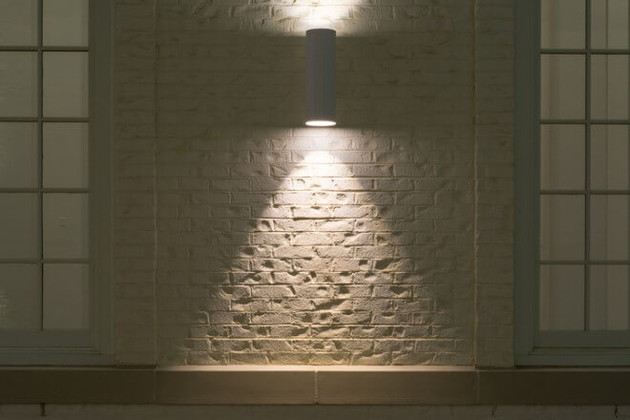
7 Things to Avoid When Making the Switch to LED Light Fixtures
Apr 21st 2017
So, you’ve decided to make the switch.
Hello LED light fixtures and bulbs. Goodbye fluorescent and incandescent lights.
You can save a ton on energy consumption with LED lights, but there’s some things to keep in mind when making the switch.
LED is a different breed of lights compared to its energy-wasting cousins.
Initially, you’re going to have to pay more attention to the packaging in order to get the LED light bulbs you want.
This applies to LED light fixtures as well.
Read on to learn what the differences are.
And what you can do to ensure you’re in love with your LED purchase(s).
It’s all about the color
Ok, let’s get this straight.
You can’t walk into a home goods store and pick the first LED box off the rack.
You’re going to need to pay attention to some features.
With LED lights (for LED light fixtures), there’s a bunch of colors.
These range from “warm white” and “soft white” to blue, even pink LED lights.
You could go with “bright white,” this color mimics daylight and department stores.
If you’re not a fan and want to opt for something else, choose another color within the 3000K-5000K (Kelvin) range.
If you’re feeling adventurous and want an interesting color for your home or business, why not go more towards the 5000K range. Here you’ll find the cool blues.
To buy or not to buy: cheap versus expensive LED lights
Like with most products, you get what you pay for.
LED light fixtures and bulbs are no exception.
While manufacturers may boast of saving you a lot of energy (aka money), that’s not always the case.
Especially in regards to price, the more expensive the LED light fixture or bulb, the better the quality.
This all depends on your price point and what you want out of your LED light fixtures and bulbs.
Ugh, the expensive price
We alluded to this in our prior point. But, yes, LED lighting is initially more expensive than fluorescent and incandescent lighting.
Your average LED light will run around $20 to $35 US dollars.
The fluorescent lighting is usually around $3.95 per bulb.
And the incandescent bulbs cost roughly $1.25 a piece.
In the short term, you may have a deficit of $16.05-$31.05 compared to fluorescent bulbs. And a difference of $18.75-$33.75 with incandescent lights.
Trust me, you’ll get your money back (and then some) in the long run.
Because LED lighting wastes less power and uses less energy.
This means you’ll save roughly $10 every year on your electricity bill. Add that up and it comes out to $50 every 5 years. $50 you’re not throwing away in the trash.
Enjoy your new, lower electricity bill!
May need one of those LED light fixtures
So, you’re thinking you’ll install the LED lights in your incandescent fixture.
Easy peezy.
Unfortunately, this isn’t the case.
LED lights have a different shape than their incandescent and fluorescent counterparts.
So, while you may be stoked about the money you’ll be saving by not buying one of those LED light fixtures.
Hate to break it to you, but it’s worth the splurge.
Not to mention, there’s more to it than bulb shape.
LED fixtures have specific heat sinks that absorb the heat the LED lights emit. Then disperses that heat in the air.
Take a look at your space
And on that heating note…
Since the LED heat sink (in the LED fixture) disperses that heat into the air, you’re going to have to evaluate your space.
So, your best bet is to stick with open space. You won’t get hot. Plus, it’s more room to enjoy your LED fixture and lights.
One word for you: lumens
Remember when we said LED is a different light breed than its fluorescent and incandescent cousins?
Well, here’s why.
Watts, kilowatt-hours, joules… These energy units can get pretty confusing.
A lot of us may think a watt is the total energy output of a light.
Not quite.
It actually refers to the amount of energy the light draws in.
On top of that, LED watts are not the same as incandescent and fluorescent watts.
When it comes to LED light fixtures and lights, it’s all about the lumens.
This is because the number of LED watts doesn’t translate to the levels of brightness, like it does with incandescent lights.
So, if you really want lights on your LED light fixture to be as bright as say a 100-watt incandescent light, look for 1600lm (lumens) on the packaging.
Dimness of LED lights
While we’ve come a long way from Thomas Edison inventing the first incandescent light bulb in 1879, we’ve got a ways to go.
Unfortunately, manufacturers still haven’t found a way to fit the LED light with the old dimmers.
In other words, your old dimmer won’t work.
If you do want a dimmer, you may have to buy an LED-compatible one.
Bonus: Less hassle
The truth is, you’re going to have to buy more when you make the switch from regular lighting to LED: light fixture, lighting, and LED-compatible dimmer.
But, in the long run, you’ll change the light fewer times.
A single LED bulb lasts up to 50,000 hours.
If you had your lights on 24 hours a day, 7 days a week, you’d only need to switch it out approximately every 5.7 years.
Compared to the fluorescent (5 bulb changes) and incandescent bulbs (42 bulb changes), that’s quite a figure.
And, on top of that, you’ll be leaving less of a carbon footprint.
So, more money in your bank. And more environmental friendliness.
Ready to make the switch?
Contact us for more information about LED light fixtures. We’re happy to assist you!
And also, be sure to check out our blog for additional LED information.


